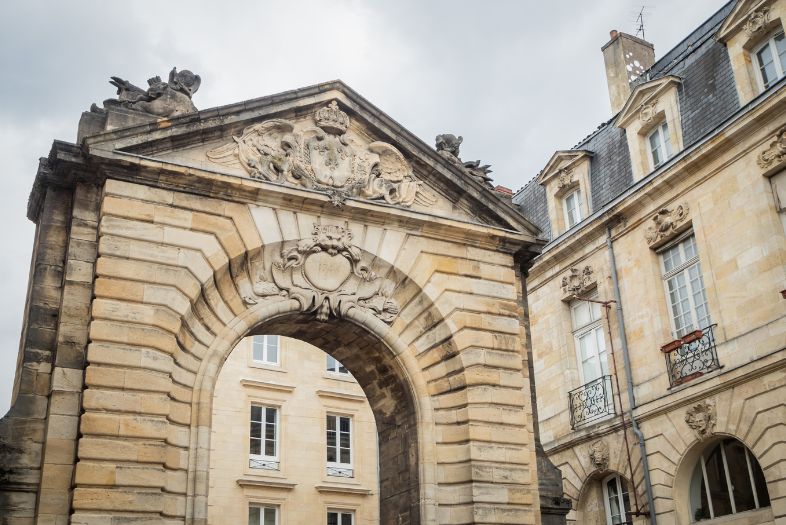
The Dijeaux Gate: one of the historic entrances to the city
Do you know the Dijeaux Gate of Bordeaux? As you may know, this is one of the 6 gates that once gave access to the city. In this article, we invite you to explore how this historic gateway has not only witnessed the passage of time, but also played a key role in the daily lives of Bordeaux residents and tourists alike.
Travel through its centuries of existence and discover its importance in the urban and cultural development of the city. To get to know it better, a free tour of Bordeaux can enrich your experience, revealing secrets and anecdotes that only a local knows.
Join us on this journey through history and beauty, where the Dijeaux Gate stands as a symbol of Bordeaux’s heritage and dynamism.
History of the Dijeaux Gate
Bordeaux’s Dijeaux Gate is a vital page in Bordeaux’s history book, standing as a silent witness to the changes and evolutions of the city. Its name comes from the temple of Jupiter.
This gate, whose origins date back to 1746, when it was created by André Porter, has been one of the main entrances to Bordeaux for centuries. It played an essential role in the control and security of the city.
Throughout its existence, it has been rebuilt and renovated several times, adapting to the needs and styles of each period. With each transformation, this gate has absorbed a little more of the spirit of the city, becoming a symbol of its resilience and adaptability.
We can consider it as one of the 10 places to see in Bordeaux, so it is not only a historical landmark. Today it can also serve as an ideal starting point to explore other Bordeaux monuments such as the Great Bell of Bordeaux. Its location and its history make it a node connecting the past with the present of the city.
In its different phases, it has witnessed key moments in Bordeaux’s history, from the rise of commerce in its early days to the turbulent periods of revolution and change.
Architecture and design of the Dijeaux Gate of Bordeaux
This monument is distinguished by its intricate architecture and design, reflecting the skill and neoclassical style of the period in which it was built. Unlike the Porte d’Aquitaine in Bordeaux, with its elegant simplicity, it exhibits a decorative richness and structural complexity that captures the eye and interest of the beholder.
Its façade, a collage of architectural elements, shows the influence of several styles and periods. Every detail, from the mouldings to the sculptures, contributes to its distinctive character. This variety of ornamentation and form makes the Dijeaux Gate a work of art that complements and contrasts with other historic structures such as the Cailhau Gate in Bordeaux.
Likewise, the design of the Dijeaux Gate not only focuses on aesthetics, but also considers functional aspects. Initially, its purpose was to control access to the city, which is reflected in its robustness and the defensive details that can still be seen in its structure. Over time, these functional elements have merged harmoniously with its aesthetic features.
The Dijeaux Gate is thus a fascinating example of how architecture can serve multiple purposes: as a defensive barrier, as a status symbol and as an artistic expression. Each element, from its gates to its towers, tells a story of design, innovation and adaptation over the years.
Conservation and heritage of the Dijeaux Gate
This site has been the subject of numerous conservation and restoration efforts over the years. These initiatives have been instrumental in preserving its structural integrity and aesthetic beauty, ensuring that it remains a witness to the past for future generations.
Restoration work has included repairing its weather-damaged architectural elements and clearing its façades of urban accretions. Its facilities have also been upgraded to ensure sustainability and accessibility.
The conservation of the Dijeaux Gate is an ongoing effort that reflects the city’s commitment to the preservation of its cultural heritage. This commitment ensures that it survives as a relic of the past and continues to play an active role in the cultural and social life of Bordeaux.



